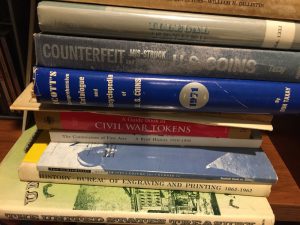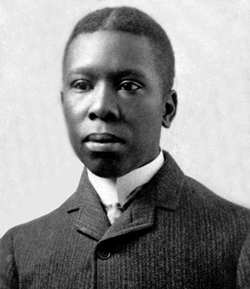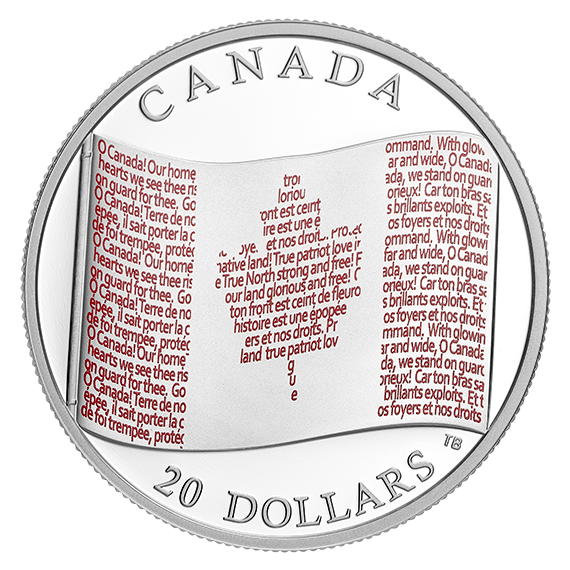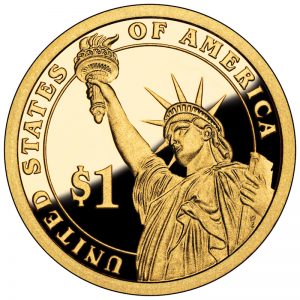Treasury Appoints a new Acting Director of the US Mint
Gibson, a Navy veteran, previously served as the Director of Human Resources for Washington, DC’s Department of Human Resources. Previously, Gibson was Deputy Chief Human Capital Officer at the Department of Health and Human Services (HHS) and held similar positions at the National Labor Relations Board (NLRB).
Gibson is a member of the federal government’s Senior Executive Service (SES). She is a federal employee, and the Acting Director does not require congressional approval. The law allows a person in an acting role to serve for a maximum of 180 days.
Treasury was quick to note that Gibson is the first African American person to lead the bureau. Deputy Secretary Wally Adeyemo said, “Her historic appointment reflects our ongoing commitment to building a qualified, diverse workforce at Treasury and its bureaus that will serve the American people well.”
Is Gibson really qualified for this position? The U.S. Mint is the world’s largest manufacturer of coins. The U.S. Mint reports that they have manufactured over 11.2 BILLION coins in 2021. Although Gibson has extensive government experience, she does not have any experience manufacturing or producing a product.
Gibson has extensive experience with human resources, but the U.S. Mint not only has a diverse workforce but a constituency that watches everything the bureau does. HHS and NLRB do not have a constituency like the U.S. Mint. The collecting community is very critical as to how this bureau does its job. While the law governs what the U.S. Mint can do, the areas where they have latitude, the decisions are more diverse than human resources.
Does having a human resources background make Gibson qualified in collector relations? An HR professional may be able to talk with collectors, but does she understand the market? The last two directors had numismatic experience before their appointments.
Does having a human resources background make Gibson qualified to manage an e-commerce service? The numismatic media has documented the failures of the U.S. Mint’s e-commerce system. Fixing the system requires leadership and the ability to understand what the technical people are saying. As a former government contractor, I watched as SES and appointees did not properly question rosy contractor reports only to watch as the contractors could not deliver results. The U.S. Mint’s contractor has not delivered. What assurances do we have that Gibson can understand when the contractor is lying?
There is nothing wrong with human resource professionals but are they qualified to run a government manufacturer with an opinionated customer base? I guess we shall see.
June 2018 Numismatic Legislation Review
Sometimes watching specific legislation to make its way through Congress is like watching paint dry. We know the paint will eventually dry but it takes a lot longer than we have time to wait. With the exception of bills that are proposing useful things like eliminating the paper dollar for a coin, there is no point to check daily.
But that is what I do. I wrote a program to download the bill information produced by the Government Printing Office on behalf of the Congress and store it in a database so that it can be reported here. This process does not become interesting until something happens.
The last two weeks in June looks like it was the equivalent of a wild ride. First, the American Innovation $1 Coin Act (H.R. 770) appeared on the agenda in the House of Representatives where the only “debate” was Rep. Jim Himes (D-CT), the bill’s sponsor, and the day’s floor manager, Rep. Sean Duffy (R-OH) speaking in favor of passage. Then it followed the regular course of passage by the House, passage by the Senate with a change, followed by the House agreeing with the amendment. Next month it should be signed into law by the President.
In the middle of this two new commemorative coin bills were introduced. First, Del. Eleanor Holmes Norton (D-DC) introduced a bill for a commemorative coin program in recognition of Paul Laurence Dunbar.Paul Laurence Dunbar (1872-1906) was an American poet, novelist, and playwright. Dunbar was very popular in his day whose work was known for its colorful language and conversational tone that made his work seem lyrical. Dunbar, who was born in Dayton, Ohio as a child of former slaves, was famous for writing in the “Negro dialect” that was associated with the antebellum south.
Dunbar had briefly worked at the Library of Congress before resigning to concentrate on his writing. His home in the LeDroit Park neighborhood of Washington, DC still stands today. In 1904 he returned to Dayton to be with his ailing mother but ended up contracting tuberculosis and dying in 1906.
The day after Holmes Norton introduced her bill, Rep. Mark Amodei (R-NV) introduced a bill for a commemorative coin program to commemorate the 150th Anniversary of the Carson City Mint.The Carson City Mint opened in 1870 primarily in response to the Comstock Lode. It started as an Assay Office in 1963 but did not gain Mint status until 1870. It was in operation from 1870-1885 and 1889-1893. It is the only branch of the U.S. Mint to have used a two-letter mint mark.
Today, the building is a branch of the Nevada State Museum.
Since the text of both bills has not been published, details of the programs are unknows except it is safe to assume that the Carson City 150th Anniversary commemorative coin program will occur in 2020.
H.R. 770: American Innovation $1 Coin Act
H.R. 6214: To require the Secretary of the Treasury to mint commemorative coins in recognition of Paul Laurence Dunbar.
H.R. 6221: To require the Secretary of the Treasury to mint coins in commemoration of the Carson City Mint 150th anniversary, and for other purposes.
Weekly World Numismatic News for July 1, 2018

Image of fake ATF badge Jonathan A. Kirschner used to lure his victims. On June 25 Kirchner pleaded guilty to impersonating an ATF agent and selling and importing counterfeit coins and precious metals bars.
Jonathan A. Kirschner, 34, of Moorestown, NJ, pleaded guilty to impersonating an ATF agent and unlawfully importing counterfeit coins and bullion into the United States.
Kirschner, who used the alias “Jonathan Kratcher,” sold fake gold bars to a collector for $11,000 in cash. When the collector brought them to a dealer it was determined they were fakes. The dealer reported the incident to Industry Council for Tangible Assets Anti-Counterfeiting Task Force (ICTA ACTF) who reported it to federal law enforcement.
After being caught, Kirschner admitted to also selling 59 fake Morgan dollars and importing the bogus coins and bullion from other countries, including China.
Even though Kirschner had a badge that looked real, it is likely that he did not have a Personal Identity Verification (PIV) card that every employee and contractor to the United States federal government is supposed to carry. Those in the military may also know this as a Common Access Card (CAC). Regardless of the name, the format is the same and should be included with the badge to properly identify the law enforcement officer.
The requirement for PIV cards as a common control came as a result of President George W. Bush issuing Homeland Security Presidential Directive 12 (HSPD-12) that called for a mandatory, government-wide standard for secure and reliable forms of identification issued by the federal government to its employees and to the employees of federal contractors.If you have any question as to the identity of any federal government official, you are allowed to ask for further identification. They must show their PIV card to confirm their identity. When you look at the PIV card, make sure the name and picture match the person in front of you. Also, ensure the agency on the card matches the agency the person claims to be from. It is not enough for the PIV card to say the person works for the Department of Homeland Security (DHS). DHS does not do direct law enforcement. It should say that the PIV card was issued by the ATF, U.S. Secret Service, or any other appropriate law enforcement agency including the Federal Bureau of Investigation (FBI).
Before you buy expensive coins and bullion from a stranger you may want to take a lesson from foreign policy: trust but verify.
And now the news…
He wore an ATF badge when meeting with his victims to put them at ease, authorities said.  → Read more at patch.com
→ Read more at patch.com
Vancouverite Alexandra Lefort’s passions for painting and planetary science came together when the opportunity presented itself to design the Royal Canadian Mint’s latest silver coin.Gr…  → Read more at vancouversun.com
→ Read more at vancouversun.com
Fake currency was used in elaborate satanic hoax in Scandinavia in 1970s  → Read more at theguardian.com
→ Read more at theguardian.com
Jonathan A. Kirschner sold fake gold bars and Morgan dollars.  → Read more at philly.com
→ Read more at philly.com
If a colonial U.S. coin is jangling in your pocket, consider a visit to Paul Padget’s corner booth this weekend.  → Read more at cincinnati.com
→ Read more at cincinnati.com
Since 2006, the metals used to make nickels have exceeded the value of the coin itself.  → Read more at qz.com
→ Read more at qz.com
Happy Canada Day, eh!
On July 1, 1867, the British colonies of Canada, Nova Scotia, and New Brunswick were joined together as a single kingdom within the British Empire then known as the Dominion of Canada. It was the first step to gaining full independence from Great Britain. Canada would gain its full independence in 1931.
Often referred to as Canada’s Birthday, July 1 was celebrated as Dominion Day until 1982 when it was renamed as Canada Day. Celebrations around Canada fully recognize this day as being the one where Canada is celebrated. Canadians, both in the country and around the world will raise a Molson’s in honor of O Canada!
To our friends from north of our border, and yes, contrary to what others might say you are our friends…
New Dollars are coming
The next step is that the bill is engrossed, which means that it will be printed in its final form and signed by the Speaker of the House, Paul Ryan (R-WI), and the President Pro Tempore of the senate, Orrin Hatch (R-UT), certifying that the printed bill has been approved by both chambers of commerce.
Once signed, the bill is sent to the White House for the President’s signature.
If this bill was not on your radar, it requires the coins use the same Manganese-Brass composition as all dollar coins struck since 2000 with the edge lettering consisting of the year, mintmark, and the national motto E PLURIBUS UNUM. The obverse will be “a likeness of the Statue of Liberty extending to the rim of the coin and large enough to provide a dramatic representation of Liberty.” The reverse will be emblematic of an innovation, innovator, or a group of innovators significant to that state or territory.
If the president signs this bill, and there is no reason why he would veto this biil, then the program will begin in 2019.
POLL: What do you use for price guides
 While shipping several packages of Red Books to customers, I was thinking about the number of people who buy these and other guides. With the state of the industry changing from an IRL (in real life) experience to one more online, I wonder how many people are still using printed guides.
While shipping several packages of Red Books to customers, I was thinking about the number of people who buy these and other guides. With the state of the industry changing from an IRL (in real life) experience to one more online, I wonder how many people are still using printed guides.
As I thought about doing this as a poll, I started gathering some of the resources that could be considered. That is when I realized that on my overflowing bookshelf I have many of these publications! I never thought I had an extensive numismatic library but the numismatic books outnumber my tech books. Now that I am retired from the tech industry, it might be time to let the tech books go, especially the out of date books.
This list serves two purposes. One is to list the general resources for numismatic pricing of mainly coins and currency. The other purpose is to provide a list of resources that others can use to build their own library. It also will serve as the categories I will use for the poll, below.
Here are is a list of pricing references that I either own or found online:
Annual books for United States coins
- A Guide Book of United States Coins, the Red Book
- Handbook of United States Coins, the Blue Book
- U.S. Coin Digest
- North American Coins & Prices
Annual books for foreign coins
- Standard Catalog of World Coins
- Lighthouse Euro Catalog For Coins and Banknotes
- A Guide Book of Canadian Coins
- Charlton Standard Catalog of Canadian Coins (Vol 1 and Vol 2)
Periodical Pricing Guides
- Coin Dealer Newsletter
- NumisMedia Weekly Market Price Guide
United States Currency Guide Books
- The Official Red Book: A Guide Book of United States Paper Money
- Standard Catalog of United States Paper Money
Foreign Currency Guide Books
- The Banknote Book (see banknotenews.com)
- Standard Catalog of World Paper Money
- Charlton Standard Catalogue of Canadian Government Paper Money
Online Guides
- Coin Dealer Newsletter (CDN; Greysheet)
- Canadian Coin Prices
- CDN Currency Price Guide
- NGC Price Guide
- Numismedia Fair Market Value Price Guide
- PCGS Price Guide
- Don and Vic’s World Banknote Gallery
NGC World Price Guide; Look under “Resources” menu item to find World price guides






